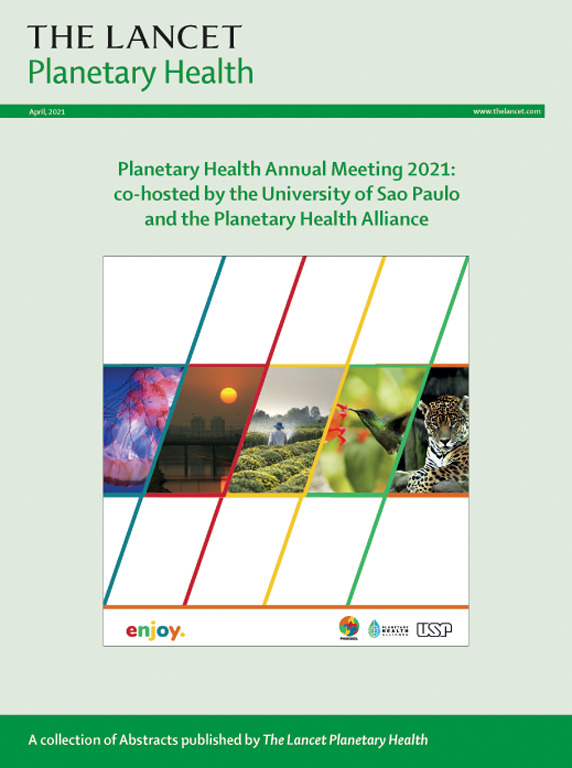Malaria vector control in sub-Saharan Africa: complex trade-offs to combat the growing threat of insecticide resistance
IF 24.1
1区 医学
Q1 ENVIRONMENTAL SCIENCES
引用次数: 0
Abstract
Mass distribution of insecticide-treated nets (ITNs) has been a key factor in reducing malaria cases and deaths in sub-Saharan Africa. A shortcoming has been the over-reliance on pyrethroid insecticides, with more than 2·13 billion pyrethroid ITNs (PY ITNs) distributed in the past two decades, leading to widespread pyrethroid resistance. Progressive changes are occurring, with increased deployment of more effective pyrethroid-chlorfenapyr (PY-CFP) or pyrethroid-piperonyl butoxide (PY-PBO) ITNs in areas of pyrethroid resistance. In 2023, PY-PBO ITNs accounted for 58% of all ITNs shipped to sub-Saharan Africa. PY-PBO and PY-CFP ITNs are 30–37% more expensive than standard PY ITNs, equating to an additional US$132–159 million required per year in sub-Saharan Africa to fund the shift to more effective ITNs. Several countries are withdrawing or scaling back indoor residual spraying (IRS) programmes to cover the shortfall, which is reflected by the number of structures sprayed by the US President's Malaria Initiative decreasing by 30% from 5·67 million (2021) to 3·96 million (2023). Benin, located in West Africa, is a prime example of a country that ceased IRS in 2021 after 14 years of annual spraying. Our economic evaluation indicates that IRS in Benin cost $3·50 per person protected per year, around five times more per person protected per year compared with PY-PBO ($0·73) or PY-CFP ITNs ($0·76). Although costly to implement, a major advantage of IRS is the portfolio of at least three chemical classes for prospective resistance management. With loss of synergy to PBO developing rapidly, there is the danger of over-reliance on PY-CFP ITNs. As gains in global malaria control continue to reverse each year, current WHO projections estimate that key 2030 malaria incidence milestones will be missed by a staggering 89%. This Personal View explores contemporary malaria vector control trends in sub-Saharan Africa and cost implications for improved disease control and resistance management.
撒哈拉以南非洲的疟疾病媒控制:为应对日益增长的杀虫剂抗药性威胁而进行的复杂权衡。
大规模分发驱虫蚊帐(ITNs)是减少撒哈拉以南非洲疟疾病例和死亡人数的关键因素。一个不足之处是过度依赖拟除虫菊酯杀虫剂,在过去二十年里,共发放了 20-130 亿顶拟除虫菊酯驱虫蚊帐(PY ITNs),导致了广泛的拟除虫菊酯抗药性。随着更高效的拟除虫菊酯-氯虫苯甲酰胺(PY-CFP)或拟除虫菊酯-胡椒基丁醚(PY-PBO)驱虫蚊帐在拟除虫菊酯抗药性地区的推广使用,这种情况正在逐步改变。2023 年,PY-PBO ITN 占运往撒哈拉以南非洲的所有 ITN 的 58%。PY-PBO和PY-CFP驱虫蚊帐比标准的PY驱虫蚊帐贵30-37%,这相当于撒哈拉以南非洲每年需要额外的1.32-1.59亿美元来资助向更有效的驱虫蚊帐的转变。一些国家正在撤销或缩减室内滞留喷洒(IRS)计划,以弥补资金短缺,美国总统疟疾倡议的喷洒面积从 5-67 万平方米(2021 年)减少到 3-96 万平方米(2023 年),降幅达 30%。位于西非的贝宁就是一个典型的例子,该国在每年喷洒 14 年后,于 2021 年停止了室内滞留喷雾杀虫剂。我们的经济评估表明,在贝宁,IRS 的成本为每人每年 3-50 美元,与PY-PBO(0-73 美元)或PY-CFP ITNs(0-76 美元)相比,每人每年的成本高出约五倍。虽然实施成本较高,但 IRS 的一个主要优势是至少有三种抗药性管理化学品组合。随着与 PBO 协同作用的丧失迅速发展,存在过度依赖PY-CFP ITNs 的危险。随着全球疟疾控制成果逐年逆转,世卫组织目前的预测估计,2030 年疟疾发病率的主要里程碑将有 89% 无法实现。这篇个人观点探讨了撒哈拉以南非洲地区当代疟疾病媒控制趋势以及改善疾病控制和抗药性管理的成本影响。
本文章由计算机程序翻译,如有差异,请以英文原文为准。
求助全文
约1分钟内获得全文
求助全文
来源期刊

Lancet Planetary Health
Multiple-
CiteScore
28.40
自引率
2.30%
发文量
272
审稿时长
8 weeks
期刊介绍:
The Lancet Planetary Health is a gold Open Access journal dedicated to investigating and addressing the multifaceted determinants of healthy human civilizations and their impact on natural systems. Positioned as a key player in sustainable development, the journal covers a broad, interdisciplinary scope, encompassing areas such as poverty, nutrition, gender equity, water and sanitation, energy, economic growth, industrialization, inequality, urbanization, human consumption and production, climate change, ocean health, land use, peace, and justice.
With a commitment to publishing high-quality research, comment, and correspondence, it aims to be the leading journal for sustainable development in the face of unprecedented dangers and threats.
 求助内容:
求助内容: 应助结果提醒方式:
应助结果提醒方式:


